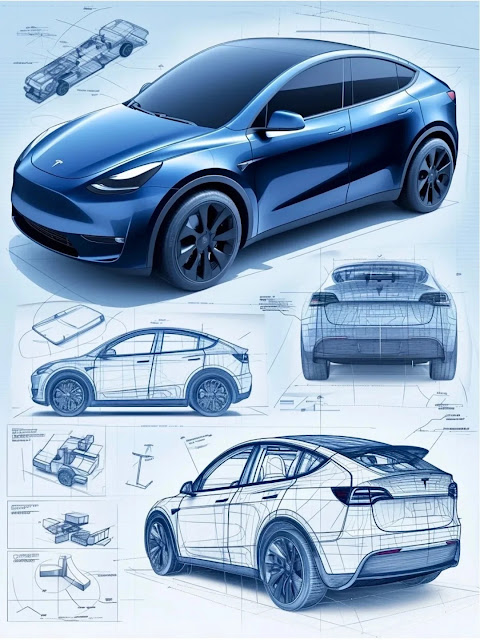A truly conscientious car manufacturer! Investing a whopping $10 billion in research and development.
Tesla's annual R&D investment exceeds $10 billion, which is over 70 billion Chinese yuan! But have you noticed that Tesla's vehicle models seem to have little variation? So, where does this massive R&D budget go?
Recently, Elon Musk tweeted on the X platform, "Tesla will invest approximately $10 billion this year in comprehensive training and reasoning artificial intelligence, with the latter primarily used for vehicles. Any company that cannot achieve this level of expenditure and cannot spend efficiently will not be able to compete."
From the very beginning, Tesla established a unique product design principle: sticking to first principles, focusing on ultimate performance, pursuing sleek and diverse exterior designs, and constructing vehicles using high-strength martensitic steel, which is not easily modified once finalized. The same applies to the hardware of the three-electric systems. This doesn't mean Tesla is standing still. On the contrary, through continuous OTA updates, Tesla adds new features to its vehicles, keeping every Tesla at the forefront of technology. Tesla owners even have access to the latest autonomous driving features on an 18-year-old model.
Taking the Model 3 and Model Y as examples, despite the introduction of numerous new versions, these two flagship models maintain a classic appearance. Tesla invests a significant amount of its R&D budget into in-depth research and development of vehicle technologies, including battery, motor control, and autonomous driving systems. Whenever a breakthrough is made, Tesla provides upgrades to all owners via OTA, ensuring that their vehicles are always technologically advanced and constantly improving.
This approach of focusing on behind-the-scenes research and development while providing tangible benefits to owners stands in stark contrast to some domestic new energy vehicle brands. Some brands merely claim to achieve breakthroughs by adding features such as televisions, refrigerators, and large sofas. However, this is often nothing more than a shortcut or a deceptive tactic. Low-cost innovation may bring superficial luxury, but it cannot lead to qualitative changes through quantitative improvements.
Tesla allocates a significant portion of its R&D and manufacturing funds to intelligent driving, the three-electric systems, and the vehicle's body steel, which is crucial for core safety. They do not engage in flashy gimmicks or clever designs. Tesla's approach undoubtedly sets an example for us: true innovation often stems from the relentless pursuit and breakthroughs in core technology, rather than simply copying others.






Comments
Post a Comment